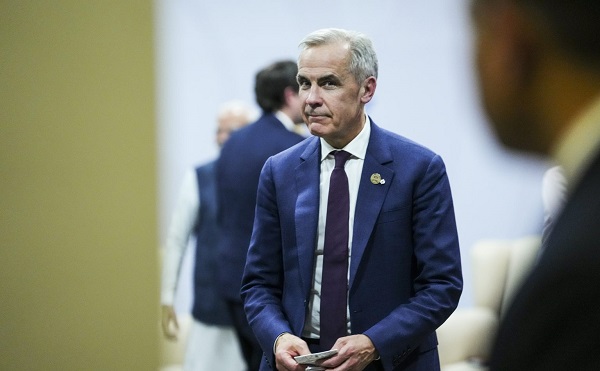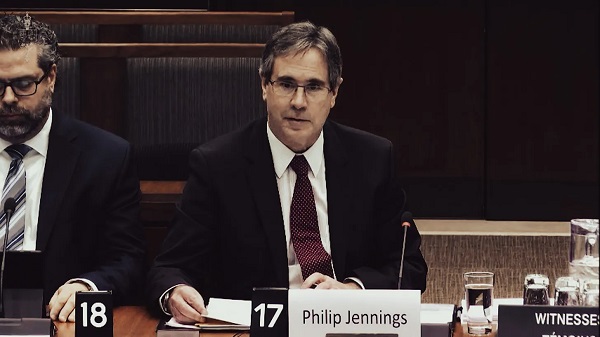Carbon Tax
Canadian energy policies undermine a century of North American integration

Energy trade with the U.S. alone is over C$80 billion more than all merchandise trade between Canada and China
Canada’s energy sector is a cornerstone of North American prosperity, but a number of federal policies have weakened its foundation over the past decade, observes a new MEI publication released this morning.
“For a century, this North American energy machine kept churning, irrespective of political winds and to the betterment of everyone on both sides of the 49th parallel,” says Taylor MacPherson, associate researcher at the MEI and author of the report. “But we can’t take it for granted; we must be steadfast in protecting this unique, mutually beneficial relationship.”
Canada is the world’s fourth-largest oil producer, fifth-largest natural gas producer, and third-largest hydroelectric generator.
Canadian exports of hydrocarbons—commodities such as crude oil, natural gas, natural gas liquids, and refined petroleum—to the United States alone totalled C$169.8 billion in 2024. This represents 22 per cent of all goods Canada exported that year.
Canada imported C$33.4 billion in U.S. hydrocarbons, representing 4 per cent of all goods imports.
“This partnership is a genuine two-way lifeline,” said Mr. MacPherson. “In the winter, U.S. gas backs up Ontario during the frigid months, while Canadian gas feeds Californian power plants in the summer, so neither country is exposed to excessive price shocks.”
The two nations have complementary market structures: for instance, Canada produces heavy crude ideal for America’s complex refineries. In the meantime, U.S. shale fields produce light oil that eastern Canadian refineries can use.
Two-way energy trade stands at over C$200 billion annually, equalling 13 per cent of all Canadian merchandise trade. This is larger than Canada’s entire two-way merchandise trade with China in 2024, which stood at C$118.7 billion.
The energy sector accounts for 10.3 per cent of Canada’s GDP in 2023 and 3.4 per cent of employment, totalling 697,000 jobs.
Employment in the sector is among the best paid in the country, with average annual compensation in oil and gas reaching roughly C$200,000, compared to just over C$75,000 across all industries.
Total contributions to government coffers from the industry are substantial, with tens of billions of dollars collected in 2024-2025, including close to C$22 billion by Alberta alone.
“This is not just money on a spreadsheet,” says Mr. MacPherson. “It is what funds our schools, our hospitals, and the services Canadians rely on. The government risks weakening our communities with its recent actions.”
Recent legislation has made the development of the energy sector increasingly difficult, which risks undermining this integration, to everyone’s detriment.
In 2019, the Impact Assessment Act replaced earlier legislation, and uncertainty created by its adoption has been reported to be a contributor to the drop in Canadian investment.
Another emerging threat has been the federal government’s proposed oil and gas emissions cap. If Ottawa were to remove it, as has been suggested, it would be removing what has long been perceived as a production cap by the industry.
Canada’s 2019 Oil Tanker Moratorium Act bans large crude and “persistent” oil tankers from B.C.’s north coast, effectively shutting the door on any major export terminal at Prince Rupert, Kitimat, or nearby ports.
“North American energy integration is a marvel of pipelines and power lines,” says Mr. MacPherson. “A confluence of harmful legislation risks toppling Canada as an energy leader, and will leave us a far cry from becoming the ‘energy superpower’ promised by Prime Minister Carney.”
You can read the Economic Note here.
* * *
The MEI is an independent public policy think tank with offices in Montreal, Ottawa, and Calgary. Through its publications, media appearances, and advisory services to policymakers, the MEI stimulates public policy debate and reforms based on sound economics and entrepreneurship.
Carbon Tax
Carney fails to undo Trudeau’s devastating energy policies

From the Fraser Institute
By Tegan Hill and Elmira Aliakbari
On the campaign trail and after he became prime minister, Mark Carney has repeatedly promised to make Canada an “energy superpower.” But, as evidenced by its first budget, the Carney government has simply reaffirmed the failed plans of the past decade and embraced the damaging energy policies of the Trudeau government.
First, consider the Trudeau government’s policy legacy. There’s Bill C-69 (the “no pipelines act”), the new electricity regulations (which aim to phase out natural gas as a power source starting this year), Bill C-48 (which bans large oil tankers off British Columbia’s northern coast and limit Canadian exports to international markets), the cap on emissions only from the oil and gas sector (even though greenhouse gas emissions have the same effect on the environment regardless of the source), stricter regulations for methane emissions (again, impacting the oil and gas sector), and numerous “net-zero” policies.
According to a recent analysis, fully implementing these measures under Trudeau government’s emissions reduction plan would result in 164,000 job losses and shrink Canada’s economic output by 6.2 per cent by the end of the decade compared to a scenario where we don’t have these policies in effect. For Canadian workers, this will mean losing $6,700 (annually, on average) by 2030.
Unfortunately, the Carney government’s budget offers no retreat from these damaging policies. While Carney scrapped the consumer carbon tax, he plans to “strengthen” the carbon tax on industrial emitters and the cost will be passed along to everyday Canadians—so the carbon tax will still cost you, it just won’t be visible.
There’s also been a lot of buzz over the possible removal of the oil and gas emissions cap. But to be clear, the budget reads: “Effective carbon markets, enhanced oil and gas methane regulations, and the deployment at scale of technologies such as carbon capture and storage would create the circumstances whereby the oil and gas emissions cap would no longer be required as it would have marginal value in reducing emissions.” Put simply, the cap remains in place, and based on the budget, the government has no real plans to remove it.
Again, the cap singles out one source (the oil and gas sector) of carbon emissions, even when reducing emissions in other sectors may come at a lower cost. For example, suppose it costs $100 to reduce a tonne of emissions from the oil and gas sector, but in another sector, it costs only $25 a tonne. Why force emissions reductions in a single sector that may come at a higher cost? An emission is an emission regardless of were it comes from. Moreover, like all these policies, the cap will likely shrink the Canadian economy. According to a 2024 Deloitte study, from 2030 to 2040, the cap will shrink the Canadian economy (measured by inflation-adjusted GDP) by $280 billion, and result in lower wages, job losses and a decline in tax revenue.
At the same time, the Carney government plans to continue to throw money at a range of “green” spending and tax initiatives. But since 2014, the combined spending and forgone revenue (due to tax credits, etc.) by Ottawa and provincial governments in Ontario, Quebec, British Columbia and Alberta totals at least $158 billion to promote the so-called “green economy.” Yet despite this massive spending, the green sector’s contribution to Canada’s economy has barely changed, from 3.1 per cent of Canada’s economic output in 2014 to 3.6 per cent in 2023.
In his first budget, Prime Minister Carney largely stuck to the Trudeau government playbook on energy and climate policy. Ottawa will continue to funnel taxpayer dollars to the “green economy” while restricting the oil and gas sector and hamstringing Canada’s economic potential. So much for becoming an energy superpower.
Business
Canada is failing dismally at our climate goals. We’re also ruining our economy.

From the Fraser Institute
By Annika Segelhorst and Elmira Aliakbari
Short-term climate pledges simply chase deadlines, not results
The annual meeting of the United Nations Conference of the Parties, or COP, which is dedicated to implementing international action on climate change, is now underway in Brazil. Like other signatories to the Paris Agreement, Canada is required to provide a progress update on our pledge to reduce greenhouse gas (GHG) emissions by 40 to 45 per cent below 2005 levels by 2030. After decades of massive government spending and heavy-handed regulations aimed at decarbonizing our economy, we’re far from achieving that goal. It’s time for Canada to move past arbitrary short-term goals and deadlines, and instead focus on more effective ways to support climate objectives.
Since signing the Paris Agreement in 2015, the federal government has introduced dozens of measures intended to reduce Canada’s carbon emissions, including more than $150 billion in “green economy” spending, the national carbon tax, the arbitrary cap on emissions imposed exclusively on the oil and gas sector, stronger energy efficiency requirements for buildings and automobiles, electric vehicle mandates, and stricter methane regulations for the oil and gas industry.
Recent estimates show that achieving the federal government’s target will impose significant costs on Canadians, including 164,000 job losses and a reduction in economic output of 6.2 per cent by 2030 (compared to a scenario where we don’t have these measures in place). For Canadian workers, this means losing $6,700 (each, on average) annually by 2030.
Yet even with all these costly measures, Canada will only achieve 57 per cent of its goal for emissions reductions. Several studies have already confirmed that Canada, despite massive green spending and heavy-handed regulations to decarbonize the economy over the past decade, remains off track to meet its 2030 emission reduction target.
And even if Canada somehow met its costly and stringent emission reduction target, the impact on the Earth’s climate would be minimal. Canada accounts for less than 2 per cent of global emissions, and that share is projected to fall as developing countries consume increasing quantities of energy to support rising living standards. In 2025, according to the International Energy Agency (IEA), emerging and developing economies are driving 80 per cent of the growth in global energy demand. Further, IEA projects that fossil fuels will remain foundational to the global energy mix for decades, especially in developing economies. This means that even if Canada were to aggressively pursue short-term emission reductions and all the economic costs it would imposes on Canadians, the overall climate results would be negligible.
Rather than focusing on arbitrary deadline-contingent pledges to reduce Canadian emissions, we should shift our focus to think about how we can lower global GHG emissions. A recent study showed that doubling Canada’s production of liquefied natural gas and exporting to Asia to displace an equivalent amount of coal could lower global GHG emissions by about 1.7 per cent or about 630 million tonnes of GHG emissions. For reference, that’s the equivalent to nearly 90 per cent of Canada’s annual GHG emissions. This type of approach reflects Canada’s existing strength as an energy producer and would address the fastest-growing sources of emissions, namely developing countries.
As the 2030 deadline grows closer, even top climate advocates are starting to emphasize a more pragmatic approach to climate action. In a recent memo, Bill Gates warned that unfounded climate pessimism “is causing much of the climate community to focus too much on near-term emissions goals, and it’s diverting resources from the most effective things we should be doing to improve life in a warming world.” Even within the federal ministry of Environment and Climate Change, the tone is shifting. Despite the 2030 emissions goal having been a hallmark of Canadian climate policy in recent years, in a recent interview, Minister Julie Dabrusin declined to affirm that the 2030 targets remain feasible.
Instead of scrambling to satisfy short-term national emissions limits, governments in Canada should prioritize strategies that will reduce global emissions where they’re growing the fastest.

Elmira Aliakbari
-

 Business1 day ago
Business1 day agoFederal major projects list raises questions
-

 International2 days ago
International2 days agoBoris Johnson Urges Ukraine to Continue War
-

 Great Reset2 days ago
Great Reset2 days agoRCMP veterans’ group promotes euthanasia presentation to members
-

 Health2 days ago
Health2 days agoOrgan donation industry’s redefinitions of death threaten living people
-

 MAiD2 days ago
MAiD2 days agoHealth Canada suggests MAiD expansion by pre-approving ‘advance requests’
-

 Business1 day ago
Business1 day agoBlacked-Out Democracy: The Stellantis Deal Ottawa Won’t Show Its Own MPs
-

 International2 days ago
International2 days agoTrump closes in on peace in Ukraine
-

 Daily Caller2 days ago
Daily Caller2 days agoEXCLUSIVE: Here’s An Inside Look At The UN’s Disastrous Climate Conference










